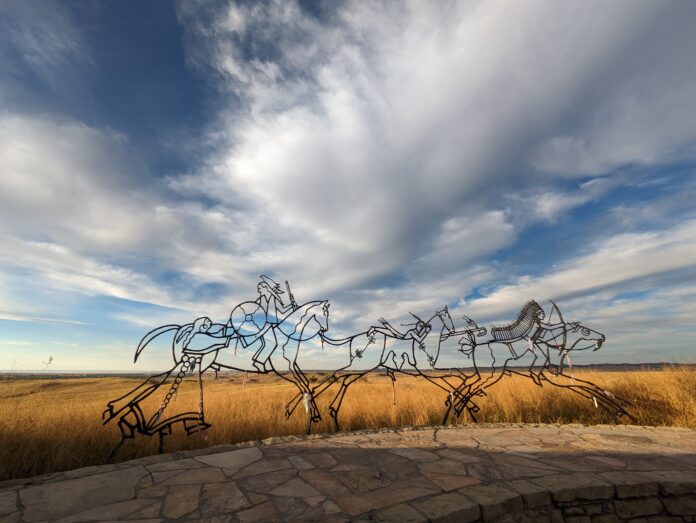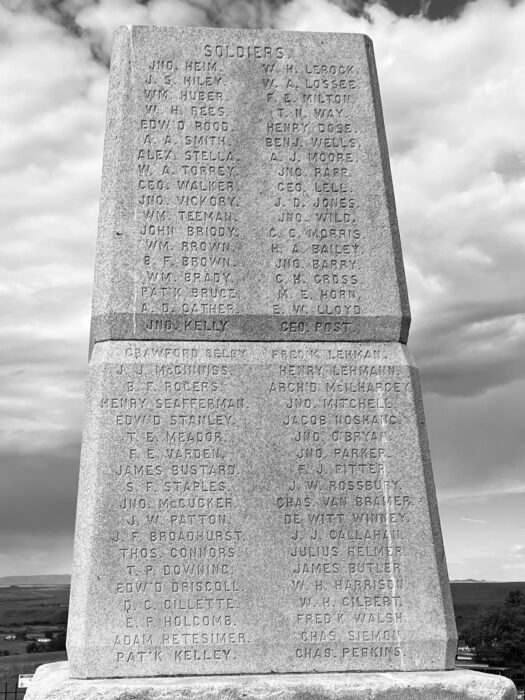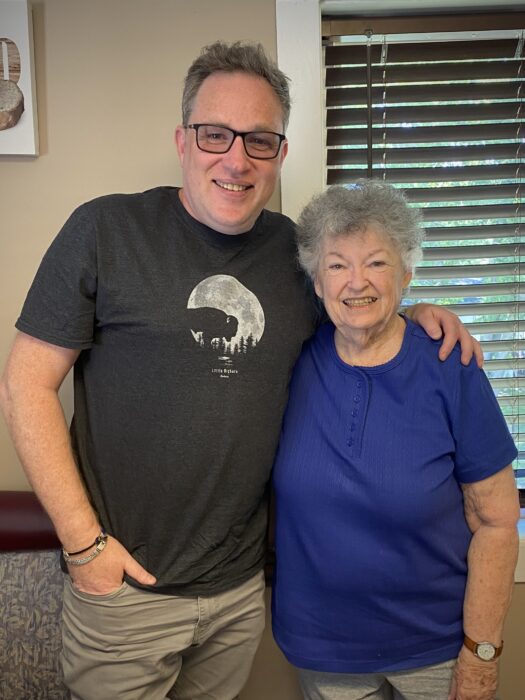
THERE’S an old Native American adage that says, “If you want to know where you’re going, look where your feet are taking you.” For one Limerick man with an inquiring mind and discerning heart, his tracks lead him all the way back through the annals of history to ‘Custer’s Last Stand’, writes reporter Alan Jacques.
And as it turns out, Limerick’s famous fighting spirit was evident on the battlefield on that fateful day on the Black Hills of the Northern Plains of Montana.
Courageous Adare son Thomas Patrick Downing battled and died alongside General George Custer as they fought against a band of Lakota Sioux and Cheyenne warriors. Custer and his forces were outnumbered and quickly overwhelmed in what was the most decisive Native American victory and the worst US Army defeat in the Long Plains Indian War.
With the 150th anniversary of the bloody battle fast approaching, a Limerick man with an “obsession” of Native American history and culture has written a book about Downing to retell the cavalryman’s story.
Des Ryan, who works in IT for a living, will launch The Ballad of Thomas Patrick Downing at the end of this month in the hope that he can help share the late Limerick man’s historic tale.
Born into post-famine Ireland, Downing moved from Adare, County Limerick, to Savannah, Georgia, at the tender age of three. The move was precipitated by an unfortunate brush that his father had with O’Donovan Rossa and the Fenian movement.
Growing up in Savannah, against the backdrop of the American Civil War, Downing experienced the cruelty of slavery and watched as the slaves were emancipated around him.
After the war, Downing left Savannah and made his way to Lebanon, Kentucky, where he enlisted in the army and fate placed him with General Custer’s Seventh Cavalry, whose regimental theme tune happened to be Garryowen.
Downing spent two years in Kentucky suppressing the emergence of the Ku Klux Klan before being assigned to the remote US-Canadian border to protect the US Boundary Commission’s survey.

Story buried for 150 years
Finally, at the age of just 20, Downing marched out of Fort Abraham Lincoln, Dakota Territory, with General George Armstrong Custer in search of Sitting Bull and Crazy Horse. A month later they found themselves at the Little Bighorn.
Despite having been in the army for five years, this was Thomas Patrick Downing’s first battle. There on the Montana grasslands, he was one of almost three hundred Cavalry troops killed on June 25, 1876.
Along with his army colleagues, Downing was buried where he fell and his story buried with him. For 150 years he has just been a name on a memorial. Now, his life has been uncovered and he becomes the only one of Custer’s anonymous Irish troops to have his story told from start to finish.
“I personally believe there is a movie in his story. Maybe it will be picked up by someone who wants to explore that,” Des Ryan told the Limerick Post.
Ryan’s book is the first book about the Battle of the Little Bighorn to tell the story of one of the anonymous troopers. Many authors have written before about the main players – Custer, Sitting Bull, Crazy Horse – but nothing of the unnamed souls among the 300 who died that day in 1876.
Des spent, who spent six years working on his book, says he’s “not certain where it comes from but I have a bit of an obsession with Native American history and culture”.
“There is something mystical about these people who were branded as savages or hostiles, were persecuted and almost driven to extinction. If you visit an Indian reservation today, which I have been lucky enough to do, they live a pitiful existence which is the polar opposite of the proud, free roaming people of the movies.”
‘To the proud people of Limerick’
The passionate Ryan says he is “a very proud Limerick man and am always on the lookout for an Irish or Limerick connection to things”.
“A number of years ago, I was reading a book about Custer and the Battle of the Little Bighorn and was curious as to whether there were any Limerick men there. When I did a little research, I found out that there were in fact six members of Custer’s Cavalry that had been born in Limerick.”
Those are, he tells me, William Ryan, Andrew Conner, Edward Davern, John McKenna, Thomas O’Brien, and, of course, Thomas Patrick Downing.
“I did a little research into each of these men. Two weren’t in the battle itself. Of the four who were in the battle, only Thomas Patrick Downing was part of what is referred to as the ‘Last Stand’,” Ryan explains.
“The more I looked into Downing, the more interesting his story became. I found connections to O’Donovan Rossa, the Ku Klux Klan, slavery, and the American Civil War. He had a really interesting though sadly short life.”
Trying to connect his historical obssession to the president day, Ryan explained that “Downing didn’t have any children, but I managed to track down descendants of his sister”.
“All of them are in the US. I corresponded with them and I got a little more insight from them and some family papers that gave new insights. I also connected with Bob Reece who is the president of the Friends of the Little Bighorn. Coincidentally, his wife has Limerick ancestry. Bob supported with some broader insights into the battle and how it unfolded.”
Earlier this year, Ryan got the opportunity to go to Montana to visit the battlefield and to meet the Downing descendants. All of this, he said, gave him a clear picture of the life Downing lived.

Des has dedicated his new book to “the proud people of Limerick”, and local historian Sharon Slater penned the foreword for the meticulously-researched publication.
The Ballad of Thomas Patrick Downing by Des Ryan comes out on October 28.



